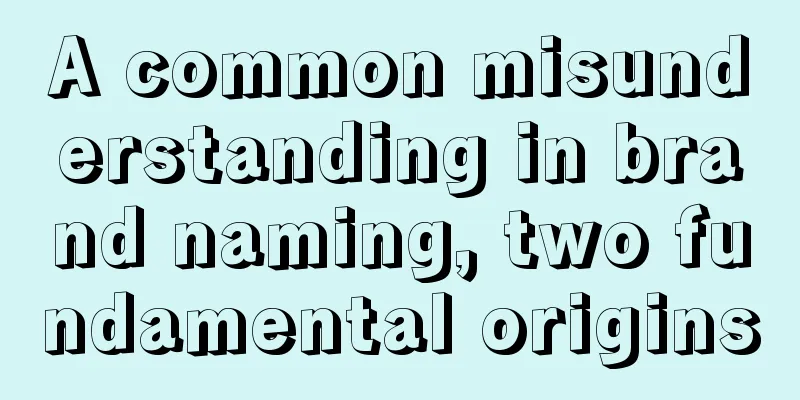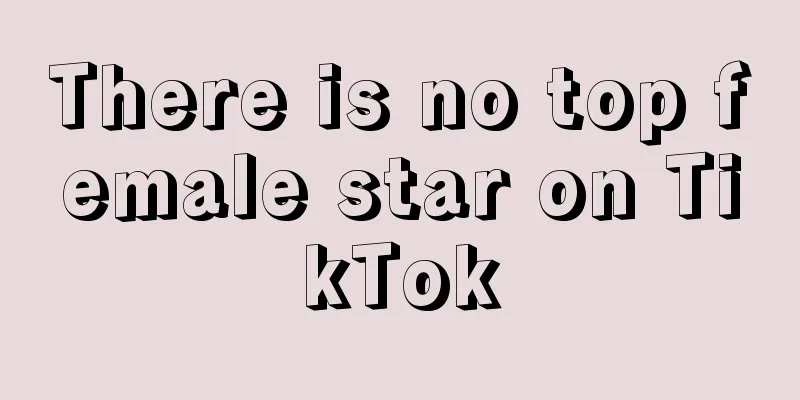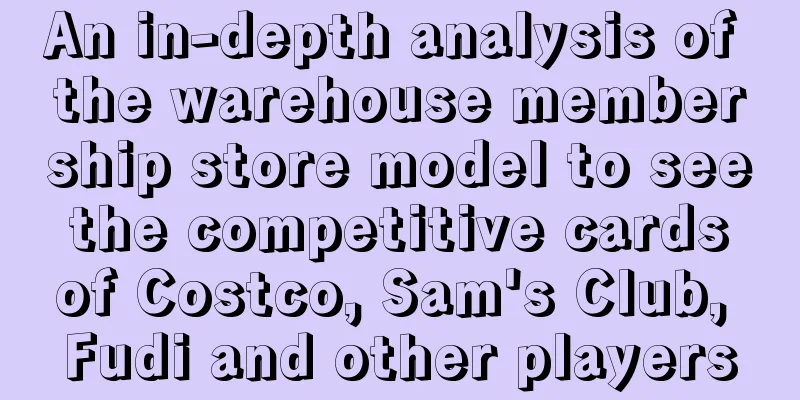A common misunderstanding in brand naming, two fundamental origins

In many brand cases, naming is often done after the brand positioning is clearly sorted out. So there is a misunderstanding: many people try to translate the information points of brand positioning through naming, and even use a few key words of brand positioning to check whether the naming is reasonable, more is better, less is worse. This is unnecessary, and sometimes it will even lead to a weird feeling: you think you have expressed it well, but others say what? Naming is like this, it has its own structure and rules, and only by following them can the words shine in that cramped space. So, what are the patterns and rules of naming? If not describing the brand positioning, then what should we describe? The brand name is of course derived from the brand positioning, but remember, don’t get caught up in the brand positioning. To some extent, the naming should transcend the literal expression of the brand positioning and think about what it should convey under the guidance of this positioning policy. What should it convey in such a small and cramped space? Yes, the space is very cramped, which determines the fundamental rule of naming: the information points must be few and precise. In order to be concise yet precise, we have to think from the root and find the essence of things. Here are two naming origins. Origin of naming: Naming is timeless and will accompany the brand for a very, very long time.What “brand associations” (functions, attitudes, emotions, feelings, etc.) are there for your brand that will endure as part of the brand’s future equity? Let’s look at some timeless brands and their names: Nike (internationalization, overcoming, endurance) / Coca-Cola (localization, happiness brought by good taste, happy emotions) / Huawei (national manufacturing, national spirit) / Apple (simple, fearless, innovation) There is actually not much complicated logic behind these names. What you understand and feel are its brand keywords, but they are not a complete expression of the brand positioning. Let me repeat: What are the timeless brand keywords? Among these keywords, what are the most representative one or two? Digest the brand positioning and think about it. This is the first step . In the second step , we need to solve the problem of how to convey and what method to use to convey, and what type of symbols to find to bring about what feeling. Feeling is very important for naming. The first feeling is greater than the meaning. Back to the brand's tone. Playful or dignified? Chinese or international? Grand or artistic? ... Grasping the tone means grasping the user's heart; if you suddenly find that your name has no tone, then this name is dead; don't deceive yourself and say that it seems to have some feeling. If you have to try hard to feel a little, then the user will definitely not feel anything. The second origin of naming: Naming is also a lethal weapon in brand communication.If you are planning a product brand (more focused, or more inclined to short-term operations), if you are looking for investors for the brand. Then, your name will carry more "functions" and "purposes". Try to think about what point of the brand you want users to focus on (the most important), what kind of story you want to tell investors (the market), and what is the title of the story? Let’s look at some emerging brands and their names: Daily Black Chocolate (scenario marketing, category marketing) / Highway Store (scenario marketing) / Ele.me (scenario marketing) / NIO (the blue sky has arrived, the future that NIO sees) From a limited number of examples, we can already see some clues: scenes and categories are the most commonly told stories and the most commonly used naming methods. Regardless of whether it is a product or a new brand, unless you have a very definite judgment and calculation for your own considerations, otherwise, please make sure that the name is intuitive, clear, and easy to understand, no matter what method you use. Consumers don’t have the patience to figure it out, and if they don’t understand it at the first time, you will miss this most important communication window. And a bad name will really affect the market’s impression and judgment of you. Well, let's make a technical summary of this article: How to name a brand? Don’t try to cram all the brand positioning information into that cramped space. Naming requires balance and sacrifice, and be focused to avoid being a hodgepodge. So how do we think and do it? Two naming origins: The origin of naming: Naming is timeless and will accompany the brand for a very long time. Therefore, we need to answer: what is the key point that supports the brand's longevity and what is the most important point; on this basis, grasp the brand's tone and temperament and choose the appropriate naming method. The second origin of naming: Naming is a lethal weapon in brand communication. Therefore, for a product name that is more focused, or a new brand name that wants to stand out at the first time, try to think about what you want users to focus on, what story you want to tell investors (the market), and what is the title of the story? Finally, it must be intuitive. Author: Judy |
<<: 2023 Tik Tok content ecosystem: “Newcomers” are king
>>: Supermarket Marketing Psychology: No one can leave the supermarket empty-handed
Recommend
After e-commerce platforms move closer to user needs, can they win back more users’ minds?
Previously, Taobao, JD.com, Kuaishou, Douyin and o...
The first half of 2024: Whose plan exploded? Who became the hot topic?
This article deeply analyzes the hot marketing eve...
Create a WeChat group that can sell goods
Can WeChat groups be used to sell goods? Can they ...
How to increase traffic on Shopee? Traffic diversion strategies shared
Shopee has a large customer base, with over 200 mi...
What is foreign trade? Which platforms are better?
Now more and more young people are starting their ...
Local Life 3.0: Douyin for food delivery, Meituan for video watching
Recently, the homepage of Meituan APP has been tes...
Can Amazon titles be exactly the same? What should I pay attention to in titles?
Friends who do e-commerce should not forget to pay...
What are the consequences of linking Amazon accounts? How to avoid linking?
If you have an account on Amazon, you need to abid...
Southeast Asian e-commerce is in a slump, and TikTok sellers are running with it
Southeast Asia's e-commerce market will become...
Is Amazon lending real? Where does the Amazon loan go?
Amazon, one of the world's largest e-commerce ...
What is the process of Amazon’s targeted advertising? What are the benefits?
There are many promotion methods on the Amazon pla...
With millions of paid members and a repurchase rate of up to 60%, what makes "Super Monkey", the new darling of the fitness industry, keep users paying for it?
Fitness is a hot demand nowadays. As a fitness bra...
Pre-sale disappears, "Cat and Dog" compete for users, and "Doupin" adds fuel to the fire
The essence of canceling pre-sales on June 18 is t...
What is the process for a company to collect and settle foreign exchange? What is going on?
With the deepening development of globalization, f...
Using AI to shoot short dramas for overseas markets can save 600,000 yuan per film
Short dramas have been very popular recently. Afte...









